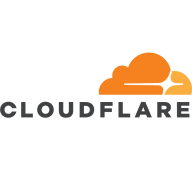


Microsoft Azure Application Gateway and Cloudflare Web Application Firewall compete in the web application security market. Based on the feature set and user feedback, Cloudflare WAF seems to have the upper hand due to its robust security features and ease of use.
Features: Microsoft Azure Application Gateway provides Layer 7 access, allowing control over requests and effective traffic management with robust load balancing. It integrates well with other Microsoft services and includes WAF for enhanced security. Cloudflare Web Application Firewall offers a suite of features like automatic updates, multiple built-in security rules, and simplicity in deployment with powerful security defenses.
Room for Improvement: Microsoft Azure Application Gateway encounters issues with complex configurations, scalability limits, and documentation complexity, needing improvements in security and integration flexibility. Cloudflare WAF faces criticism for outdated ModSecurity versions and limited logging capabilities, with users requesting better support and reporting granularity.
Ease of Deployment and Customer Service: Microsoft Azure Application Gateway is deployed across hybrid, public, and private clouds, with limited on-premises support, and has mixed customer service experiences. Cloudflare WAF deploys seamlessly in public and hybrid clouds, offering straightforward setup but with inconsistent support during complex implementations.
Pricing and ROI: Microsoft Azure Application Gateway is priced higher compared to other solutions, operating on a pay-as-you-go model with cost savings through Azure service integration. Cloudflare WAF is perceived as more affordable, offering competitive subscription models with an emphasis on budget-conscious users seeking robust security. Both solutions provide adequate ROI, with Cloudflare favored for its feature set relative to its cost.
WordPress security can be tricky, and that's where Cloudflare can be absolutely helpful for small businesses.
For the small project I was working on, using the basic tier provided a huge improvement at zero cost.
In terms of return on investment with Cloudflare, it costs my time to set them up, but basically once they're set up, it's done.
My experience with the pricing or licensing of Cloudflare Web Application Firewall is that many features can be accessed for free, so the pricing is definitely reasonable.
Microsoft Azure Application Gateway significantly impacts our cost savings while maintaining higher performance.
We have seen a return on investment in terms of time-saving and cost-saving by not creating our own infrastructure.
This would help us address issues promptly, especially during unforeseen events like DDoS attacks.
Cloudflare does not offer hands-on technical support to fix customer problems but rather a self-service model.
The key factor is the language in which the support is offered, which, in this case, is in Thai.
I would rate the technical support with Cloudflare as excellent every time I've had to contact them.
The technical support of Cloudflare Web Application Firewall rates between five and seven at maximum.
There is room for improvement, specifically in paid support, by providing more direct contact.
I would rate Microsoft support as good because they have a very skilled technical support team in the background
It is a SaaS tool, but the fact that they have workloads deployed across the world proves that it is a highly scalable tool.
The tool offers very good performance, even during high-traffic periods.
I rate the solution’s scalability an eight out of ten.
The scalability of Cloudflare Web Application Firewall rates between 8 to 9, as it depends upon the use cases and what exactly the client needs.
Microsoft Azure Application Gateway is a very scalable product.
Microsoft Azure Application Gateway is a scalable solution.
For DDoS protection, I would not recommend Cloudflare.
I rate the solution’s stability an eight out of ten.
The service is very stable with no impacts during high-traffic periods.
The stability of Cloudflare Web Application Firewall deserves a perfect 10 out of 10.
The stability is good, and except for a few instances, I don't see the non-availability of Azure Cloud services.
There's a need for improvement in areas like AI-based DDoS attacks and Layer 7 WAF features.
Despite these challenges, overall, Cloudflare remains the preferred solution compared to Azure, AWS CloudFront, and Google Cloud Armor.
The timing aspect can lead to it being considered overpriced. This is a particular concern we have with Cloudflare, as they may struggle with accurately detecting the client.
The product can improve by having more multitenancy capability, which is currently not available.
I think they're doing a good job with DNS and as support for any domains that I create or that my clients create, it's mandatory for me to ensure they have Cloudflare as their DNS provider.
They need to improve their support because getting a response for basic requests took around 48 hours, which is too long.
There is room for improvement in terms of support, such as assigning agents directly for more straightforward engagement.
In future releases of Microsoft Azure Application Gateway, I would like to see more AI functionalities and a better dashboard as well as some customizations.
Microsoft Azure Application Gateway has room for improvement because it offers many features, but its configuration is a bit difficult, at least from the developer point of view.
That's where Cloudflare shines for smaller businesses – it's ten times cheaper than Akamai.
I find it to be cheap.
I think they should consider reevaluating the pricing for support, as it can be quite high.
Azure solutions are quite expensive.
When it comes to pricing for Microsoft Azure Application Gateway, I would rate it a seven out of ten.
The most valuable features of the solution are performance and security.
Techniques like minification and image compression reduce the size of assets, leading to better performance and faster user load times.
The solution has been able to compare it to the market, and I think the product has taken great strides in automating quite a bit of things, and they use a lot of AI.
The custom rules and the geo-redundant geographical rule feature, which allows me to implement geographical rules for customers, add significant value.
The best features of Cloudflare Web Application Firewall are multiple, including the WAF, rate limiter, and bot attack protection.
Cloudflare Web Application Firewall's advanced reporting and analytics tools add a layer that we're able to visualize and see before it actually hits the local firewall.
We are using it for some of the security features for our applications, particularly for securing traffic in transit with SSL.
The Web Application Firewall (WAF) in Microsoft Azure Application Gateway has been very effective in protecting applications from security threats.
The gateway's Web Application Firewall feature enhances security as it is the first entry point to your network from the outside world.



| Company Size | Count |
|---|---|
| Small Business | 46 |
| Midsize Enterprise | 8 |
| Large Enterprise | 25 |
| Company Size | Count |
|---|---|
| Small Business | 15 |
| Midsize Enterprise | 6 |
| Large Enterprise | 6 |
| Company Size | Count |
|---|---|
| Small Business | 22 |
| Midsize Enterprise | 6 |
| Large Enterprise | 23 |
Cloudflare is a highly-regarded Content Delivery Network (CDN) and a Distributed Denial-of-Service (DDoS) protection solution. The robust global connectivity cloud platform that is Cloudflare ensures users are able to connect to the Internet quickly, securely, and reliably. Cloudflare is one of the world's largest networks in the marketplace today. Using Cloudflare, businesses, educational entities, NGOs, vloggers, bloggers, and anyone else with an internet presence can experience more secure, faster websites and applications.
Currently, there are millions of Internet locations on Cloudflare, and the Cloudflare network
continues to grow every day by the thousands. The solution is able to fulfill the requests for
millions of websites seamlessly and serves on average 45 million HTTP requests per second.
Cloudflare has safe, secure data centers in close to 300 cities worldwide to ensure every
client request is filled as quickly as possible. It is Cloudflare’s edge network that makes this
possible by keeping content and other services as close to each client as possible, so the
information requests are always only seconds away.
Many organizations that work in democracy, civil society, human rights, or the arts are able to
access Cloudflare's highest levels of protection for free via Project Galileo. Additionally, official
election websites can be secured from hacking and fraud through Cloudflare’s Project
Athenian, also at no additional cost.
Cloudflare can also help organizations of all sizes develop a robust zero-trust strategy to
ensure the highest levels of productivity and profitability. Employees, stakeholders, and end users have a greater level of satisfaction and overall improved user experience, which can, in
turn, result in higher revenues and overall ROI. Zero-trust and BYOD (bring your own device)
access ensure end users and employees always have the best resources and technology
available to them at all times.
Cloudflare benefits
Cloudflare has many benefits. Some of its most valuable benefits include:
- Faster load times
- Robust DNS security
- Intuitive cloud Web Application Firewall (WAF)
- Free universal SSL
- Image enhancement
- Automatic browser caching
- Next-generation cloud load balancer
- Accelerated Mobile Pages (AMP)
- Rate limiting
- Minification
- Zero-trust capabilities
- Cost-effective
- Reduced carbon footprint
Reviews from real users
“Many websites require an SSL certificate because they sell stuff and want SSL. Cloudflare
comes with an SSL certificate built in. It's automatic. You sign yourself up for Cloudflare, and
an SSL certificate automatically protects your website. If you have a connection between your
website and your host, the server, Cloudflare, and the host, you don't necessarily need a
certificate.” Spencer M., Owner at Tech Exchange
“What I like best about Cloudflare is that my company can use it to trace and manage
applications and monitor traffic. The solution tells you if there's a spike in traffic. Cloudflare
also sends you a link to check your equipment and deployment and track it through peering,
so it's a valuable tool.” Daniel P., Network Engineer at Ufinet
“The most valuable feature of Cloudflare is the GUI. You are able to control the solution very
well through the interface. There is a lot of functionality that is embedded in the service.” PeerSpot user, Competence Center Manager at a tech services company
Cloudflare Web Application Firewall's intuitive dashboard enables users to build powerful rules through easy clicks and also provides Terraform integration. Every request to the WAF is inspected against the rule engine and the threat intelligence curated from protecting over 27 Million websites. Suspicious requests can be blocked, challenged or logged as per the needs of the user while legitimate requests are routed to the destination, agnostic of whether it lives on-premise or in the cloud. Analytics and Cloudflare Logs enable visibility into actionable metrics for the user.
Azure Application Gateway is a web traffic load balancer that enables you to manage traffic to your web applications. Traditional load balancers operate at the transport layer (OSI layer 4 - TCP and UDP) and route traffic based on source IP address and port, to a destination IP address and port.
To learn more about our solution, ask questions, and share feedback, join our Microsoft Security, Compliance and Identity Community.
We monitor all Web Application Firewall (WAF) reviews to prevent fraudulent reviews and keep review quality high. We do not post reviews by company employees or direct competitors. We validate each review for authenticity via cross-reference with LinkedIn, and personal follow-up with the reviewer when necessary.